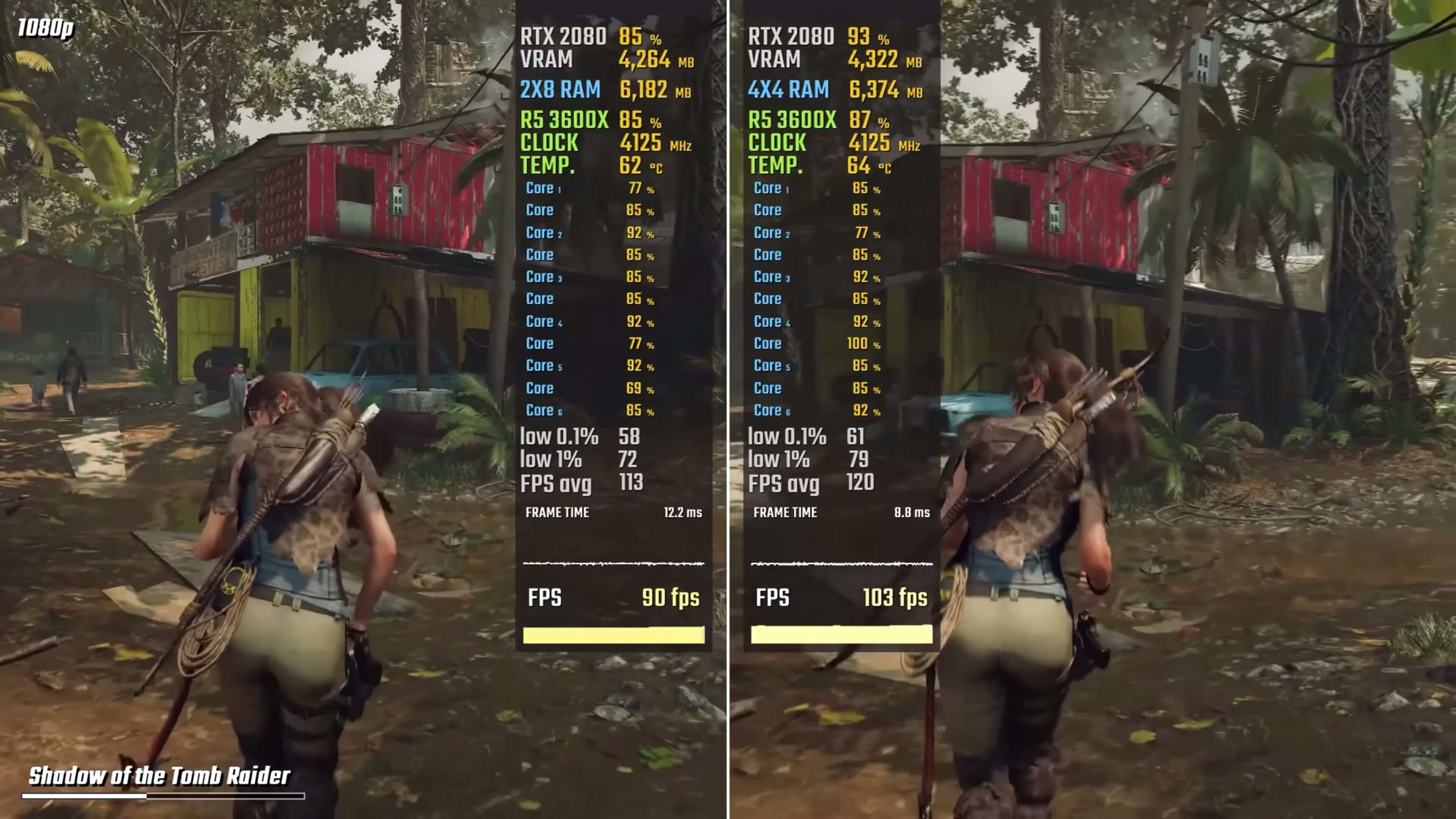While potentially, possible, and I'm not saying I believe the results to be an accurate representation of what you'd see across the board for every increase to four DIMMs vs two because it's very likely that it's not, or that it's not for every generational or manufacturer platform, it also needs to be pointed out that this was on a clean lab system with a specific set of sticks.
Notably, that they weren't even the same sticks as what was used in the 2 DIMM configuration which is evident by the fact that they were 4GB DIMMs instead of 8GB DIMMs. That alone almost negates the study, but we can overlook that for now.
The bigger concern is whether stability and long term endurance of the CPU and motherboard are affected. It is well documented, by Intel as well as a good many OTHER engineers, that running four DIMMs vs two introduces a much higher stress, double in fact, on the IMC and to some degree on the motherboard as well. Normally, we see this translate into a direct increase in CPU temperature AND usually an overall increase in DIMM temperatures as well since the DIMM sockets become more thoroughly heat saturated.
Realistically, in some cases, this could easily translate into an accelerated rate of electromigration and voltage threshold shift, or at least an increase in potential for it. Electromigration is a direct result of increased or excessive voltage and heat, and adding two DIMMs doubles the amount of voltage and memory related heat that will impact the IMC as well as the package. Long term, that COULD translate into a reduction of longevity and the chances of that are greatly increased on systems where the voltage or thermal compliance are already at an elevated level compared to the stock condition.
Whether that is a problem or not will depend greatly on the specifics of the built and the overall cooling picture, not to mention that it is likely GREATLY affected by the quality of the board being used. Let's fact it, an 80 dollar motherboard is not going to handle or withstand the same thermal and configurational stress as a 165+ dollar board will in practically every case. A cheaper board almost universally will not only not handle higher speed memory AS well, but will not handle a four DIMM configuration AS well either.
I think this study is skewed on multiple levels and while it shows some things, I'm not confident that WHAT it shows is what we think it shows. The evidence would seem to be a lot more "this case" than "widely empirical". I 100% do not believe that if every person playing a CPU limited game runs out and adds two DIMMs to their configuration, or swaps in a four DIMM kit, they are going to see ANY kind of an increase in performance.
Some might, as with the configuration in this study, but I think many others not only won't, but might even see a decrease in performance if they are running a system that is already toeing the line in terms of thermal compliance, and they might also shave several years off the longevity of their hardware in some cases.


